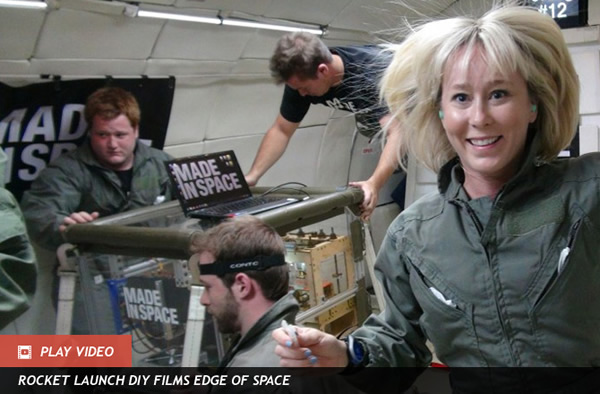Made In Space? 3-D Printer Fit for Microgravity
Made In Space? 3-D Printer Fit for Microgravity
3-D printing is probably the most exciting new technology being developed in the world today. And it’s not limited to being merely “in the world” either — NASA has recently contracted a company called Made In Space to develop the first ever 3-D printer for microgravity, which they’re planning to use on the International Space Station (ISS) and beyond.
While the first working 3-D printer was built in 1984, the technology has come forward in leaps and bounds over the past few years. There’s already a lot of talk about how we could use 3-D printing in human spaceflight and space colonization. Asteroid miners Deep Space Industries are considering using 3D printing for harvested asteroid material, ESA are investigating how to print a moon base, and Cornell University are even considering how to print space food.
But so far, there’s one drawback. The puzzle of how to use 3-D printing technology in space hasn’t yet been properly considered. It hasn’t, that is, until now.
Made In Space are a team of experts originally assembled (if you’ll pardon the pun) at Singularity University, NASA Ames. They’re a group of 3-D printing experts, spaceflight veterans, and entrepreneurs, including former astronaut Dan Barry and president of Planetary Resources Chris Lewicki.
They’ve been tasked with spending the next year or so experimenting on and developing a 3-D printer for use on the ISS. Tests in microgravity have already been undertaken, and they’re planning to commence full development on the project this Fall.
“The ability to 3-D print parts and tools on demand greatly increases the reliability and safety of space missions while also dropping the cost by orders of magnitude,” explains Made In Space CEO, Aaron Kemmer. “The first printers will start by building test items, such as computer component boards, and will then build a broad range of parts, such as tools and science equipment.”
Presently, off-world outposts such as the ISS are entirely dependent on Earth. Lacking any manufacturing capabilities of their own, all tools, spare parts, and anything else they may need have to be shipped to orbit from Earth.
This also limits how far away such an outpost can feasibly be; the further away any space station or colony is located, the harder it will be to resupply. Furthermore, in the event of any emergencies, such as the recent ammonia leak that saw an unscheduled spacewalk for repairs, having the correct tools and components is vital.
With 3-D printing technology in orbit, any required items can be printed out and then recycled on demand. This also has the benefit of saving on resources as well as transport costs, making resupply missions much cheaper to accomplish. To achieve this, Made In Space are working on a printer tailored to the unusual environmental challenges found in microgravity. Their technology uses extrusion additive manufacturing — meaning it uses polymers and other materials to assemble each object is built layer by layer.
If Made In Space achieve what they’re setting out to do, it could have a dramatic impact on future space travel. Eventually, components could be made for space habitats, housing, laboratory facilities… Ultimately, they suggest, even things like small satellites may be printed in their entirety before being deployed.
NASA are evidently keen to utilise this new technology as soon as they can. “We’re taking additive manufacturing technology to new heights, by working with Made in Space to test 3-D printing aboard the space station,” said NASA’s associate administrator for space technology Michael Gazarik. “Taking advantage of our orbiting national laboratory, we’ll be able to test new manufacturing techniques that benefit our astronauts and America’s technology development pipeline.”(Jun 12, 2013 01:51 AM ET // by Markus Hammonds)












